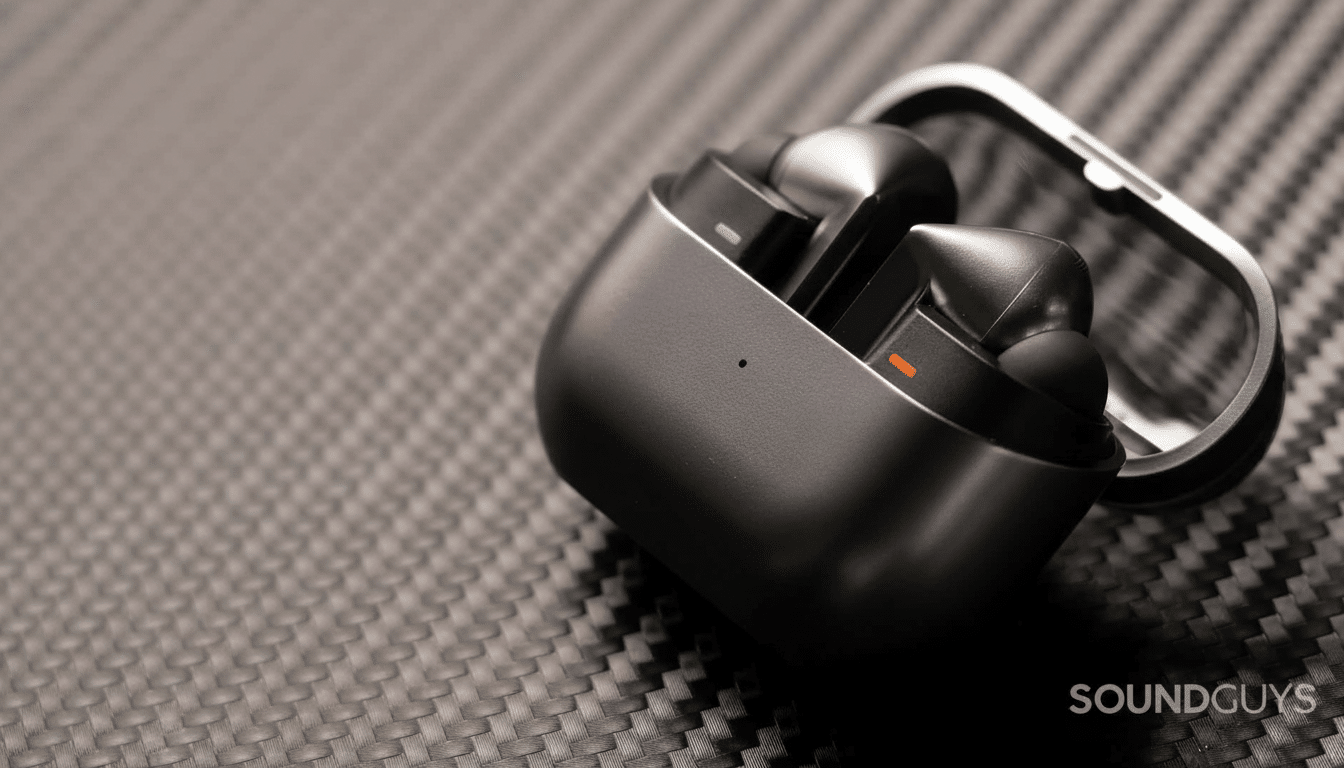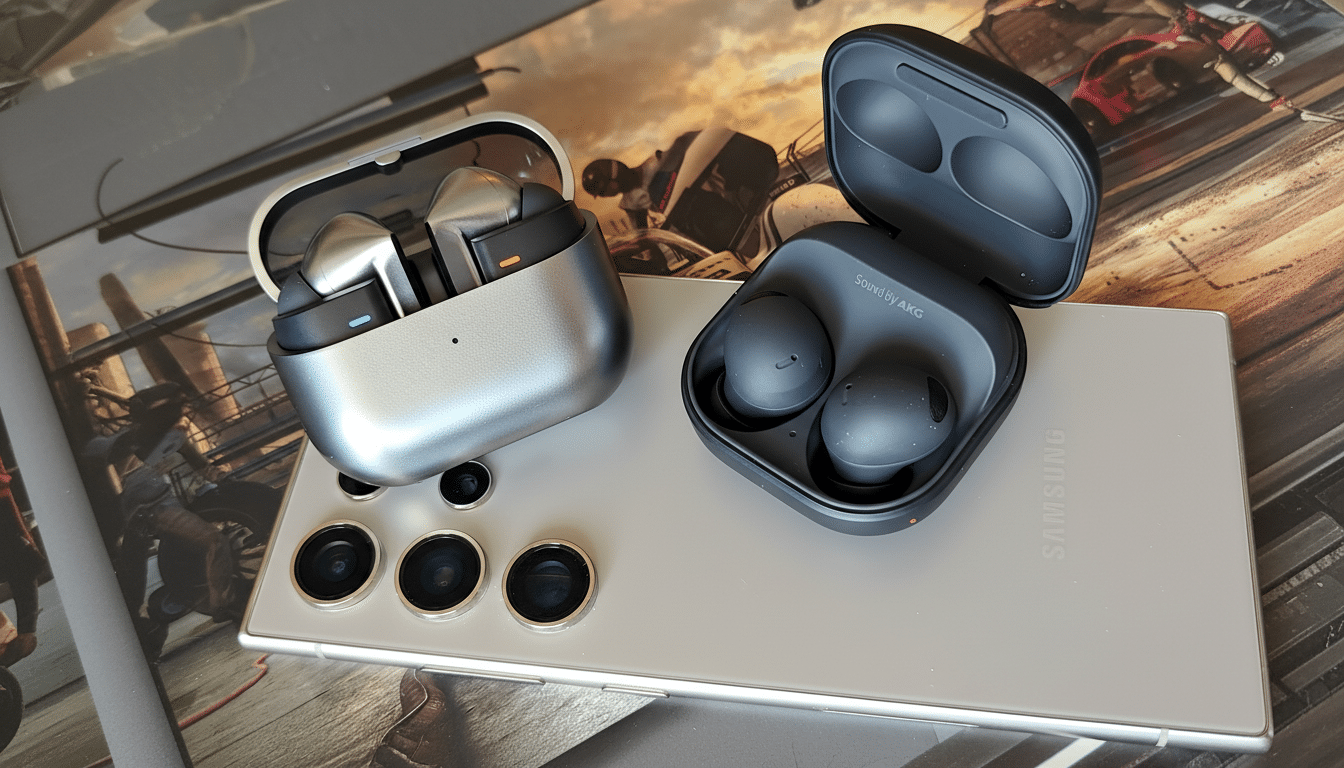A new leak from a One UI 8.5 test build provides the clearest indication to date of what Samsung’s next earbuds will look like, and the first impression is both simple and significant: Galaxy Buds 4 retain the stem, but shape-wise things are evolving.
An icon asset tagged for the new model shows a slightly rounder, less jutted appearance with silicone tips on display, indicating Samsung is refining comfort and call quality without letting go of the Buds 3 family’s signature shape.

What the New Icon Shows About Galaxy Buds 4 Design
Found in pre-release One UI 8.5 firmware, the icon is accompanied by a file name that blatantly refers to Buds 4, bolstering its credibility as an official device icon.
It features a stemmed earbud, which is rounder (or perhaps flatter) on the side and has clear in-ear tips. Icon art is stylized, but Samsung does often retain such device silhouettes (at least for regular ROMs), particularly in a dev picker menu where visual recognition may prove useful.
Two things are implicit in that rounded geometry. A smoother stem is also better to stick in your ear — which benefits gesture control, whether you’re using squeeze-based inputs or taps on touch. Second, there are the ear tips themselves, which are an indication of a closed in-ear construction as opposed to being a semi-open fit. That generally means better passive isolation, which is the building block for effective active noise cancellation.
How It Compares to Galaxy Buds 3 Design and Fit
The Galaxy Buds 3 brought a more blade-like, angular stem with details and a visual departure from Samsung’s classic bean or bulbous shapes. The Buds 4 icon, on the other hand, is lighter and less consistent. The visual change may not appear radical, but ergonomics and acoustics can be influenced: A little more nozzle angle fullness might influence insertion comfort, or softer edges to the stem geometry eliminates hot spots for long listening sessions.
And it gives a clue as to microphone strategy. For buds in this category, we would expect to see two or three mics per side: one at the stem tip usually used for beamforming. A flatter or rounder tip can also result in a less obstructed travel path for the mic port, and may help with voice pick-up. That is crucial for reducing wind artifacts and increasing clarity in loud environments — complaints regularly found in user reviews of nearly every TWS brand.
Why the Subtle Shape Shift in Buds 4 Design Matters
Design isn’t merely aesthetic; it forms sound. The fact is that a good silicone tip with a well-angled nozzle can get passive attenuation high enough to let the ANC function at lower, less aggressive anti-noise levels — generally meaning greater stability and fewer artifacts. Equally, stems influence call performance. Apple’s shift to shorter, flatter stems on later AirPods generations was about more than style — it improved mic placement and the reliability of pinch controls. A more rounded Buds 4 stick might dovetail with those pragmatic gains.

There’s also durability and sweat management to take into account. Fewer hard edges mean simpler sealing around openings for things like vents and microphones. There’s no specific rating cited here, but excellent build quality in a subtle industrial design generally implies at least some general care around waterproofing (a must for anything that goes to the gym or on your commute).
Ecosystem Features Directly Relevant to Buds 4 Users
The fact this initial teaser is coming as part of One UI 8.5 indicates tight integration with Samsung’s ecosystem. You can still count on the regular conveniences, such as Auto Switch with Galaxy devices, easy pairing through an account-based setup flow and SmartThings Find. On the wireless side of things, the industry momentum behind Bluetooth LE Audio, LC3 codecs and Auracast support has been pressing ahead with the help of the folks at the Bluetooth SIG. And regardless of whether all features ship on day one, the design and software breadcrumbs suggest a platform built from the start with an eye for modern low latency, power-efficient audio.
From a market point of view, independent trackers such as Counterpoint Research still have Samsung among true wireless global leaders and especially in the Android ecosphere. That pressure tends to accelerate generational refinements that are general, focused on everyday reliability — calls, comfort and noise control — rather than flashy specs for their own sake.
What We Still Don’t Know About Galaxy Buds 4 Specs
An icon is unable to respond to queries about a driver, battery life or the size of a charging case. It doesn’t give us any indication whether the Buds 4 share specs with a Pro version, or what new codecs or spatial audio upgrades Samsung will support. Nor does it confirm the control scheme: a rounded stem implies pinches, but touch is still on the table.
What to look for next:
- Regulatory filings from organizations like the Bluetooth SIG and FCC, which often reveal key specs
- Companion app strings that suggest feature toggles
- Packaging imagery that usually confirms colorways and case shape
Samsung’s iconography has historically matched neatly with real hardware silhouettes, so the wider design direction here is probably on point even if we don’t know all the nitty-gritty yet.
Bottom line: Galaxy Buds 4 feel like a more thoughtful iteration — keeping the functional stem while softening the design for better grip, comfort and mic placement. If hardware follows the One UI cues, Samsung’s next earbuds may ditch the sharp angles for a more refined, everyday-first experience.

